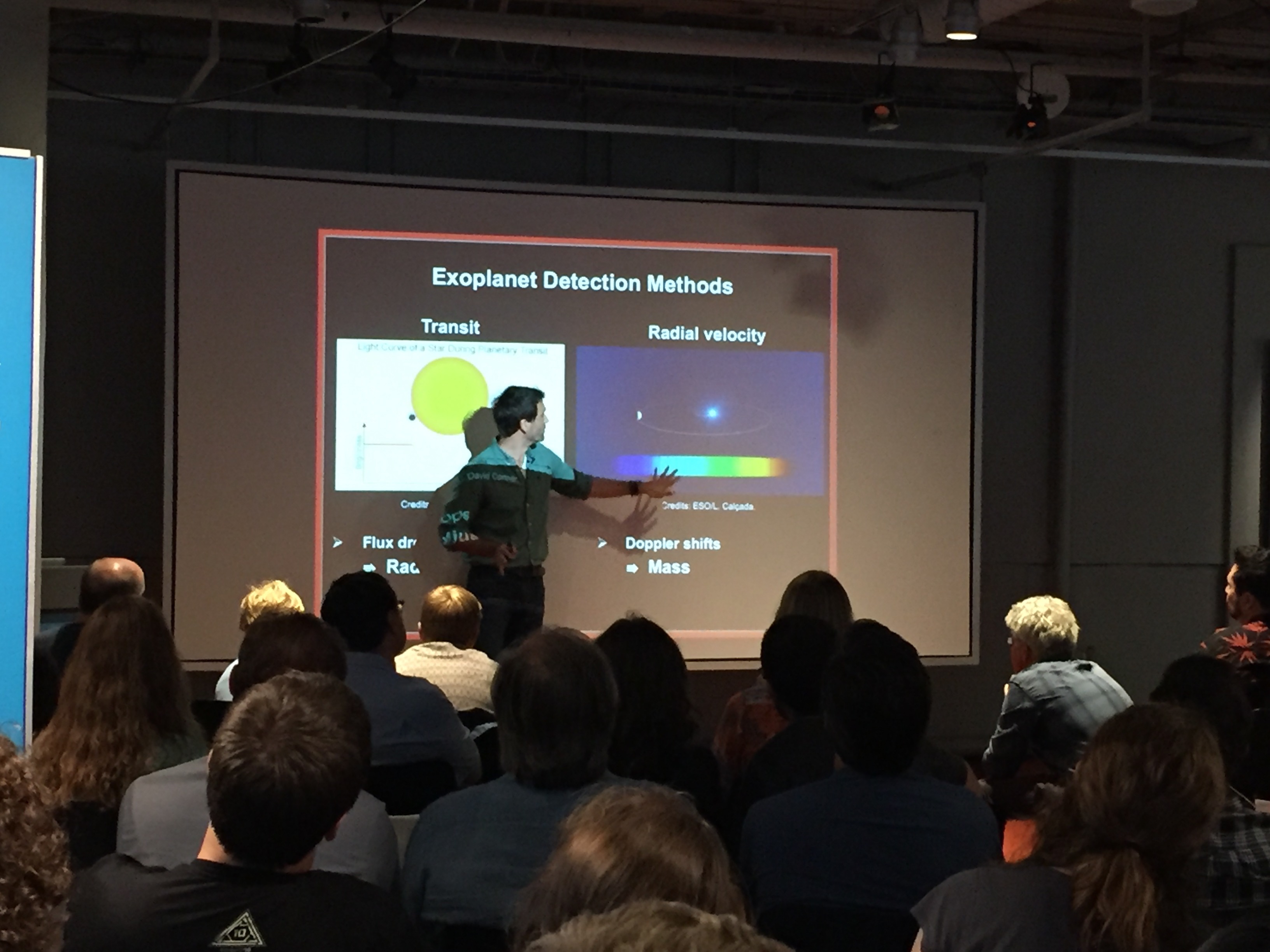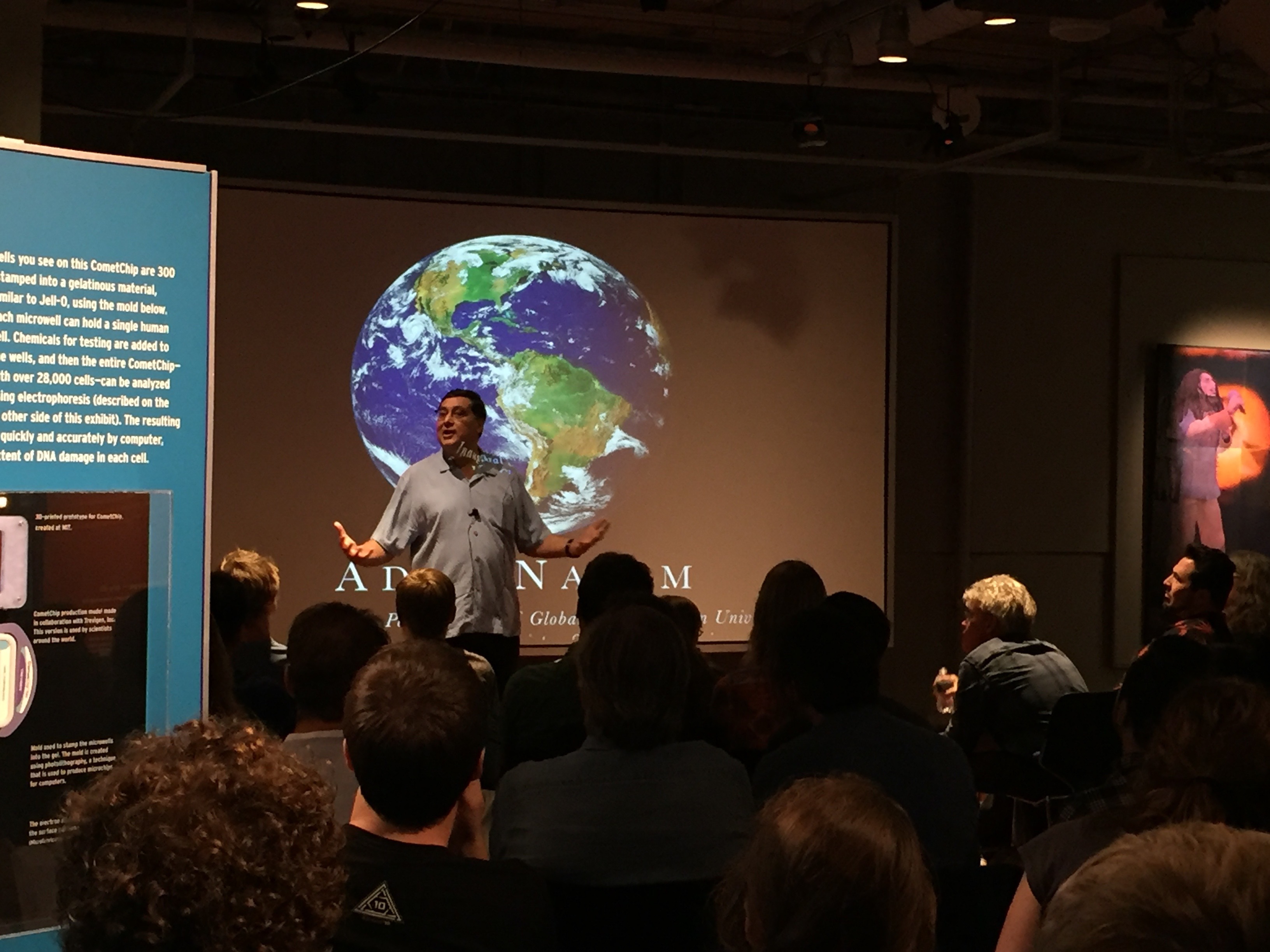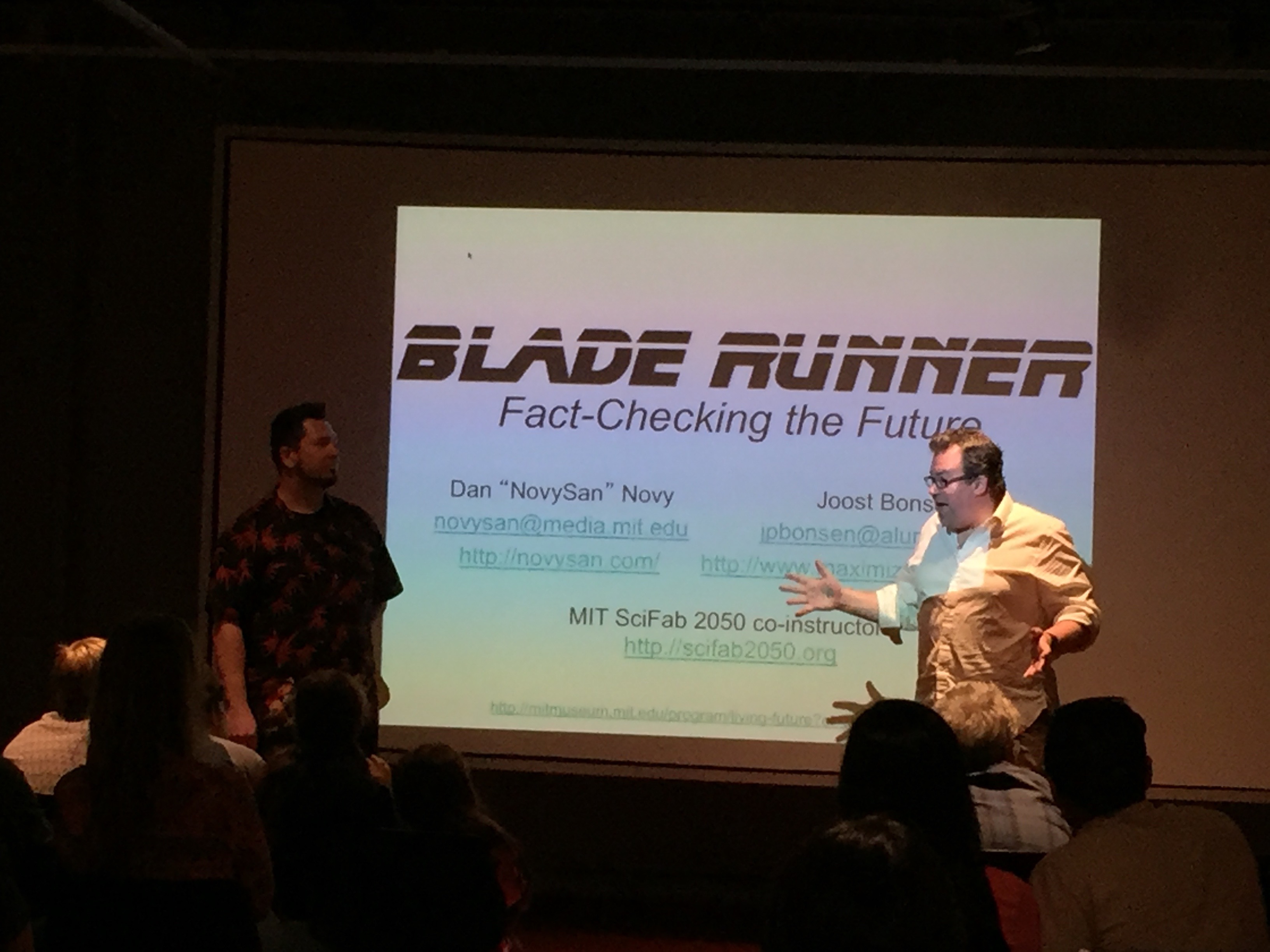PAOC Spotlights
Living in the Future
Scientists from MIT and Boston University explore how well early science fiction in movies were able to predict today's technological advances and the culture around which it's based.
Since the early days of film, cinematographers have leaned on science and technology for inspiration, transporting audiences through time and space to alien worlds and alternate realities. The first fictional stories based on scientific theory and phenomena have birthed blockbusters like 2001: A Space Odyssey and the Star Trek series. Movies such as these have helped pave the way for a popular genre that links familiarities of today’s real world with the fantasy of futurism: science fiction.
But how well has Hollywood’s science fiction predicted today’s science reality? A group of MIT and Boston University researchers wanted to know, and on September 17th, experts in the fields of space exploration and the environment gathered in front of an audience at the MIT Museum to discuss and dissect the technology behind popular science fiction films and compare it to today’s ongoing research.

New Worlds
Presentations from MIT PAOC’s postdoc Julien de Wit and Stirling Lab graduate student Alison Gibson launched the audience through the galaxy and into outer space. Using Star Trek clips, de Wit illustrated how the crew was able to characterize planets that they came across as they journeyed through space with ease, and how assessing the habitability of exoplanets today is not as simple. Specialized microscopes and telescopes help us detect planetary bodies, and using changes in the light we receive from their neighboring star, let us peek into their composition. And while we’ve found hundreds of exoplanets, search for a suitable extrasolar habitat continues.
The next challenge that we face, once we’ve found a planet and can get to it, is to survive on it. Gibson is working to solve that problem on Mars. Unlike the slim spacesuit worn by Matt Damon in the movie The Martian, real suits are bulky—providing multiple levels of life support needed to protect the human body from low pressure and extra gravity. And the task of walking could prove incredibly difficult. But boots currently in development with obstacle warnings and haptic feedback responses could one day mitigate the issue of tripping.

Earth in the Future
But what about if we can’t leave Earth? Professors Adil Najam of BU and Charles Harvey of MIT examined the future of the environment through the lens of water and climate change. In his talk, From Borneo to Dagobah: Understanding Tropical Swamp Forests, Harvey showed images of a foggy bog scene from Star Wars, and how the hydrogeology of such locations on Earth can produce phenomena like peat fires in Malaysia and cause large carbon dioxide emissions.
Najam took a more holistic and apocalyptic approach. Mad Maxand The Day After Tomorrowenvision a world without hope—climate change is irreversible, and Earth is on a trajectory to destruction. Massive droughts, floods and an ice age threaten humanity, and civilization has dissolved into chaos. While these are sensationalized tales -- that have become their own subgenre of climate fiction or “cli-fi” – their premise is based in accepted science. Najam and most researchers agree that climate change is human-caused and water problems are the, “great issue of the future.” Initially, alarmist films such as these helped to increase public awareness of climate, but in the long run it’s unlikely that we’ll see weather extremes like those of the films. However, at this point, avoidance of the symptoms of climate change is not an option; however, we can work to mitigate the worst possible effects. According to Najam and most scientists, we are in an age of climate adaption, but we’re not in a stage of abandon. Steps to “de-sensationalize and re-humanize” the problem, alongside realistic cli-fi, can help provide accurate information to the public and minimize the consequences of climate change, like those in the films.

Then and Now
It’s rare that an audience can directly compare the technology of today with that imagined over 30 years ago for the present day, but the 1982 film Blade Runner affords us such a luxury. Set in a dystopian Los Angeles, 2019, “blade runners” are on a mission to assassinate “replicants,” genetically engineered humanistic androids. The MIT Media Lab’s Dan Novy and Joost Bonsen examine everything that Harrison Ford’s character, Rick Deckard, uses and encounters in his quest to track down the imposters—from camera and video calling technology to flying cars, frosted window glass, synthetic biology and emotion detection software.
While not all the predictions put forth by the fictional films hit the mark on scientific accuracy, it’s fair to say that the future is now. And today’s groundbreaking research and imaginations of big screen directors are keeping us starry-eyed for films to come.
See more photos from the event.